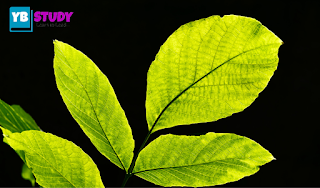Factor Affecting Photosynthesis: Short Note
Photosynthesis a biochemical process in which complex organic compounds are synthesised from simple inorganic substances like carbon dioxide and water in the presence of light and chlorophyll with the release of oxygen as a byproduct.
- Photosynthesis is takes place in green plants and some bacteria like Cyanobacteria.
- Photosynthesis is a anabolic process.
- Photosynthesis is called as redox reactions ( Redox reaction means the process in which oxidation and reduction takes place simultaneously is called redox reactions.)
- Photosynthesis occurs in Chloroplast.
- To maintain biological structure in ecosystems, solar energy is important.
- Plants collect solar energy for the process of photosynthesis. When they capture their energy, they use it to make sugars and other organic elements that meet life’s needs.
- This energy also translates into chemical energy, which is necessary for plants to make structures such as handling vessels, trunks, roots, leaves, etc.
Factor Affecting Photosynthesis
For the Process of photosynthesis a series of factors is necessary: chloroplasts, pigments, water, carbon dioxide and light. All these elements are important for this process and the lack of one of these factors would unbalance the development of the plant.
The process of photosynthesis affected by number of factors these are internal as well as external factors:
Internal factors
- Internal factors are mainly based on the composition of the leaves.
- In these intervenes the thickness of the cuticle, epidermis, number of stomata and available space between cells arranged in the mesophyll.
- These elements directly affect the propagation of O2 and CO2 in addition to the loss of water.
- Are those that are included number, size, age and orientation of leaves, amount of chlorophyll and rate of translocation of food etc.
Chlorophyll
- Chlorophyll absorbs light, without Chlorophyll photosynthesis can not take place.
- Certain diseases, mineral deficiencies and aging can lead to chlorophyll deficiency.
- Pigments are components that collect light.
- There are many different examples of pigments in vegetables.
- Among them are chlorophyll a and b, which produce green tones.
- Then there are carotene, xanthophyll and anthocyanin, which produce yellow, blue and red tones.
External factors
- External factors such as availability of light, CO, concentration, temperature and soil water are included
- External factors that affected the rate of photosynthesis are as follows : i) Light, ii) CO, concentration, iii) Temperature, iv) Water
Light:
- There are three aspects of light as a factor; light quality, intensity and duration.
- We already know that rate of photosynthesis is more in the red and blue region.
- There is a linear relationship between light intensity and rate initially, but at higher light intensity further increase is not possible and at very high light intensity.
- Beyond a point, it cuases breakdown of chlorophyll and decrease in the rate.
- Absorption of pigments is different, they are capable of assimilating different wavelengths. The green color of chlorophyll is due to the fact that they reflect wavelengths closer to green.
CO2 concentration:
- Carbon dioxide is the major limiting factor for photosynthesis.
- The CO, concentration is very low in the atmosphere between 0.03 and 0.04 %. Increase up to 0.05% can cause an increase in the rate; beyond this it can become damaging over longer periods.
Temperautre:
- The dark reactions i.e. light independent reactions are controlled by enzymes and are more sensitive to temperature than light reaction.
- The temperature optimum for photosynthesis depends on the habitat the plants are adapted to; tropical plants have a higher temperature optimum than emperarate plants.
Water
- In the process of photosynthesis, water is a conductor of electrons, protons, and oxygen that is released into the atmosphere.
- Though water is one of the raw materials for photosynthesis , the effect of water as a factor is more through its effect on the plant and not directly on teh rate of photosynthesis.
- Water stress causes closure of stomata, leading to low availability of CO,.
- It brings about loss of turgidity in leaves and wilting. Though all environmental factors simultaneously affect the rate of photosynthesis, usually one factor is the major cause or is the one that limits the rate.
- Water is the life source for plants- plants can not survive without it. Lack of water leads to a lack of carbon dioxide if the leaves refuse to open their stomata to keep water stored inside them.
Polluted atmosphere
- A polluted atmosphere can lead to a 15 percent decrease in the rate of photosynthesis.
- Industrial gases are the big scapegoat. Soot, which settles on the leaves, blocks the stomata, making it difficult to take in carbon dioxide.
- Contaminated water affects aquatic plants and their photosynthesis process.
- For photosynthesis to take place at a constant rate the presence and levels of various factors are essential.
- Photosynthesis requires everyone at optimum levels to produce the best results.

